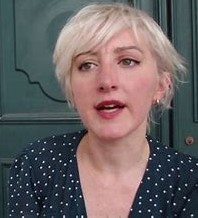A History of Underwear with Professor Chicken
Written by Hannah Hold and illustrated
by Korwin Briggs
Roaring Brook Press, 2022
Children will learn all kinds of
strange facts about underwear in “A History of Underwear with Professor
Chicken.” And they’ll have fun doing it.
For instance, the first pair of
underwear were discovered in a block of ice five thousand years ago. They were
worn by a hiker named Otzi who was trapped in a glacier. This undergarment was
a leather loincloth tied with a belt.
In ancient Egypt, King Tut liked
his loincloths so much that he was buried with more than a hundred pairs.
Plants were used to pad baby
diapers many years ago. The Chukchi in northeastern Siberia padded baby bottoms
with reindeer moss in 1000 CE. The Navajo in southwestern North America used
shredded desert cliffrose for babies on cradleboards in 1400 CE.
During the European Renaissance, English ladies began to wear underwear that held their skirts out.
Professor Chicken appears
throughout the book saying amusing quips. Chickens model underwear on every
page.
In the back of the book,
Professor Chicken tells how underwear gives clues about how people lived. What
animals did they have? What plants were around? How connected were they to the
rest of the world? What technology did they have? What did they value?
Finally, there is a chart showing
pictorially how underwear changed from 3000 BCE to the present.
Children will be amused by this
book – especially the pictures. At the same time, they will learn some
interesting facts about underwear.
The illustrator Korwin Briggs
brings the book to life with silly full-page images of chickens wearing
underwear throughout history.
About the Author
Hannah Holt is a children’s book writer with an engineering degree. Her books include “The Diamond and the Boy” and “A Father’s Love.” They weave together her love of language and science. She lives in Oregon with her husband, their four children, and a patient cat named Zephyr. Visit her at hannahholt.com.
About the Illustrator
Korwin Briggs is an author and illustrator who makes comics, infographics, and books about academic stuff like history and science. And chickens wearing underwear. He lives in New York City. See more of his artwork at korwinbriggs.com.





























